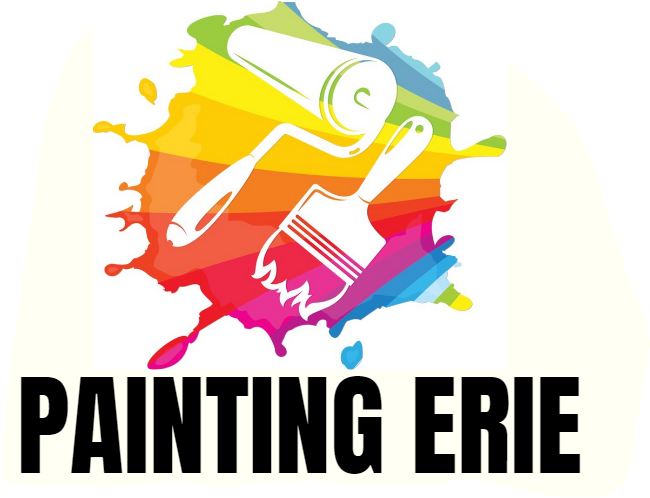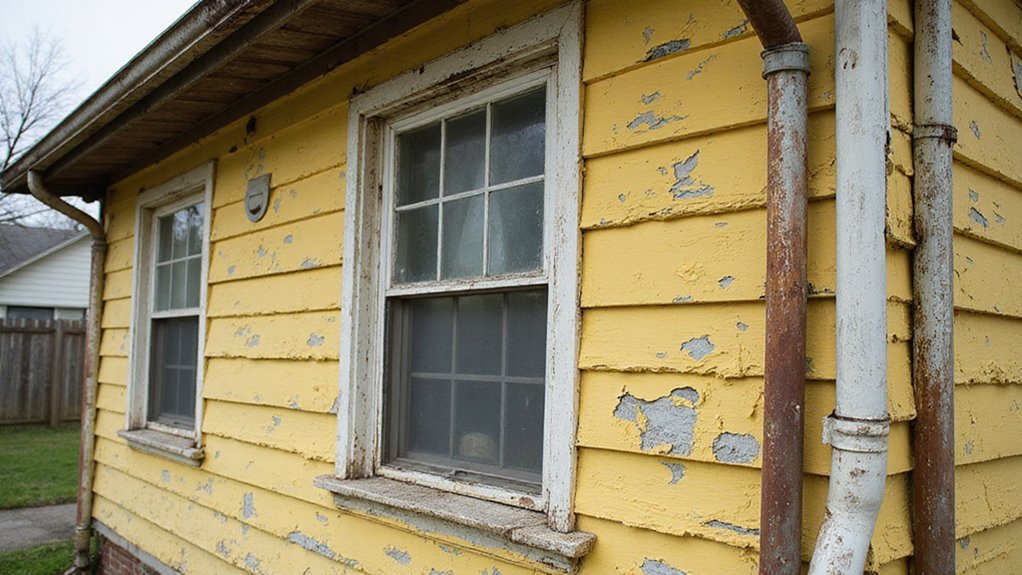As you prepare to tackle that outdoor painting project in Erie, you’re likely aware of the city’s notorious humid summers. But do you know how this excess moisture can sabotage your hard work? High humidity can weaken the bond between paint and surface, allowing water molecules to seep in and accelerate deterioration. If you don’t take the right precautions, you’ll be left with a peeling, flaking, or blistered mess. So, what can you do to guarantee a strong, enduring finish?
The Science Behind Humidity and Paint Failure
Frequently, homeowners and contractors alike overlook the critical role humidity plays in outdoor paint jobs, leading to premature paint failure. You might wonder why this happens. It’s because humidity affects paint chemistry, causing the paint to break down faster.
When you apply paint to a surface, it forms a bond with the substrate. High humidity weakens this bond, allowing water molecules to penetrate the paint film and accelerate its deterioration. Additionally, humidity hinders proper surface preparation, making it challenging for the paint to adhere to the surface. Consequently, the paint may peel, flake, or blister, compromising its integrity.
To avoid this, it’s crucial to comprehend how humidity impacts your outdoor paint job and take necessary precautions to guarantee a successful and long-lasting finish. Moreover, exterior painting provides an extra layer of protection from environmental factors like humidity, helping to mitigate potential damage.
How High Humidity Affects Different Types of Paint
Three primary types of paint are commonly used for outdoor applications: latex, oil-based, and epoxy. You’re probably wondering how high humidity affects each of these types of paint.
Latex paint, the most popular choice, is water-based and dries faster in ideal conditions. However, high humidity slows down the evaporation process, leading to longer drying times and increased risk of moisture trapping.
Oil-based paint, on the other hand, takes longer to dry under normal conditions. High humidity exacerbates this issue, making it more prone to dust and debris settling on the wet surface.
Epoxy paint, known for its robust nature, is also susceptible to humidity. It requires a specific temperature and humidity range for proper curing, making it more challenging to apply in Erie’s humid summers.
Understanding how high humidity affects your chosen paint type is vital in selecting the right paint application methods and paint drying conditions for a successful outdoor paint job.
Additionally, choosing the right paint involves considering safety, especially with non-toxic paint options that protect families during outdoor projects.
Preparing Your Outdoor Space for Painting
What’s the current state of your outdoor space – is it ready for a fresh coat of paint? Before you start painting, it’s critical to prepare your outdoor space to guarantee a successful paint job. Cleaning the surface is vital, as dirt and grime can affect paint adhesion. Use surface preparation techniques like power washing to remove dirt and mildew.
Next, inspect your outdoor space for any cracks or holes and fill them with a suitable sealant. Apply a moisture barrier to protect your surface from Erie’s humid summers. This will prevent water from seeping behind the paint and causing it to peel or flake off. By taking the time to properly prepare your outdoor space, you’ll achieve a strong bond between the paint and surface, resulting in a beautiful, long-lasting finish.
Choosing the Right Paint for Erie’s Climate
How do you guarantee the paint you select can endure Erie’s humid summers? When choosing the right paint for Erie’s climate, you need to consider the unique challenges posed by high humidity and moisture retention. This is vital to ensure a durable and long-lasting finish.
Look for paints with high water resistance and moisture-wicking properties to prevent water from seeping into the paint film. Opt for 100% acrylic latex paints, which offer better adhesion and flexibility than oil-based paints. Consider paints with additives that help to reduce moisture retention, such as silicones or silanes.
Verify the paint you choose has a high level of UV resistance to protect it from Erie’s intense summer sun. Don’t forget the importance of proper surface prep, including cleaning and priming, to create a strong bond between the paint and the surface.
Application Techniques for a Durable Finish
Will you be able to achieve a durable finish if you don’t command the right application techniques? The answer is no. Proper application techniques are essential to ensure a long-lasting finish that can withstand Erie’s humid summers.
When it comes to brush application technique, use high-quality brushes with synthetic bristles, and work in small sections to maintain even coverage. Apply thin, uniform coats, and avoid overloading the brush with too much paint.
For spraying application technique, use a high-volume, low-pressure sprayer to minimize overspray and guarantee a smooth finish. Keep the sprayer 10-12 inches away from the surface, and move in a steady, back-and-forth motion. By becoming proficient in these techniques, you’ll be able to achieve a durable, professional-looking finish that will last for years to come.
Post-Painting Care and Maintenance
After completing your outdoor paint job, a crucial step often overlooked is post-painting care and maintenance. You’ve invested time and effort into achieving a beautiful finish, and now it’s indispensable to protect it from Erie’s humid summers. By establishing a regular cleaning schedule, you’ll prevent dirt and grime from accumulating and causing damage.
Regularly inspect your painted surface to identify any issues before they become major problems. Here are some critical tasks to include in your post-painting care routine:
- Perform a surface inspection every 3-6 months to catch any cracks, peels, or fading
- Clean your exterior walls every 1-2 months using a mild detergent and low-pressure washing
- Trim nearby vegetation to prevent branches from scratching your paint
- Touch up any damaged areas promptly to prevent further deterioration
- Consider applying a clear coat or sealant to provide additional protection
Common Mistakes to Avoid in Humid Climates
Because Erie’s humid summers can wreak havoc on your outdoor paint job, it’s essential to steer clear of common mistakes that can compromise the integrity of your paint.
One mistake you don’t want to make is failing to choose quality primers specifically designed for humid climates. These primers are formulated to help your paint adhere better and withstand the moisture-laden air.
Another mistake isn’t taking steps to avoid excessive moisture. Make sure to fix any water leaks, guarantee good drainage, and provide adequate ventilation to prevent moisture buildup.
Additionally, avoid painting in direct sunlight or during peak humidity hours. By being mindful of these common mistakes, you can secure a long-lasting, professional-looking finish that will withstand Erie’s humid summers.
Frequently Asked Questions
Can I Paint in the Morning Dew to Avoid Humidity?
You can try painting in the early morning dew to avoid humidity, but be prepared for extended drying time, as moisture in the air and on the surface will slow down the paint’s curing process.
How Long Does It Take for Paint to Fully Cure in Erie?
You’ll want to wait 7-14 days for paint to fully dry, depending on ideal humidity levels. Since Erie’s average relative humidity is 64%, you’ll need to adjust your paint drying timing accordingly to guarantee a robust, long-lasting finish.
Will High Humidity Affect Paint Color or Finish?
When you apply paint, high humidity can impact the finish, but it’s unlikely to alter the color. However, you should be concerned about paint adhesion, as surface moisture retention can compromise the bond, leading to peeling or flaking over time.
Can I Use a Dehumidifier to Speed up the Drying Process?
You can employ a portable dehumidifier to expedite the drying process, but it’s vital to observe humidity levels closely, ensuring the ideal range for paint curing, and adjusting the dehumidifier’s settings accordingly for excellent results.
Are There Specific Brush Types for Painting in Humid Weather?
When painting in humid weather, you’ll want to choose brushes with synthetic bristles that resist water absorption, ensuring smooth strokes. Opt for brushes designed for water-based paints, and consider a paint formulation with moisture-wicking properties to minimize drying issues.

